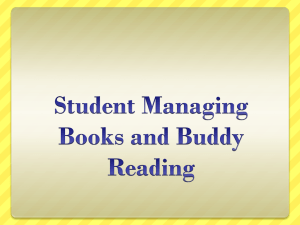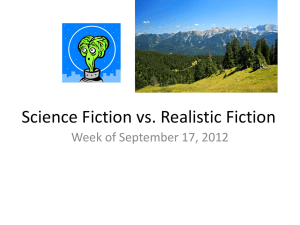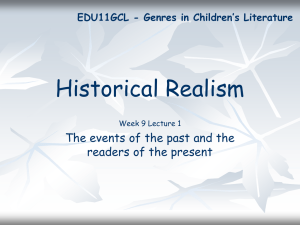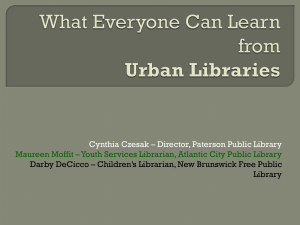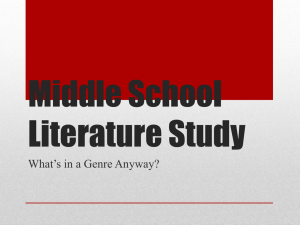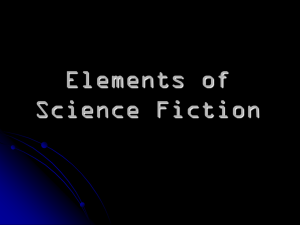Document
advertisement
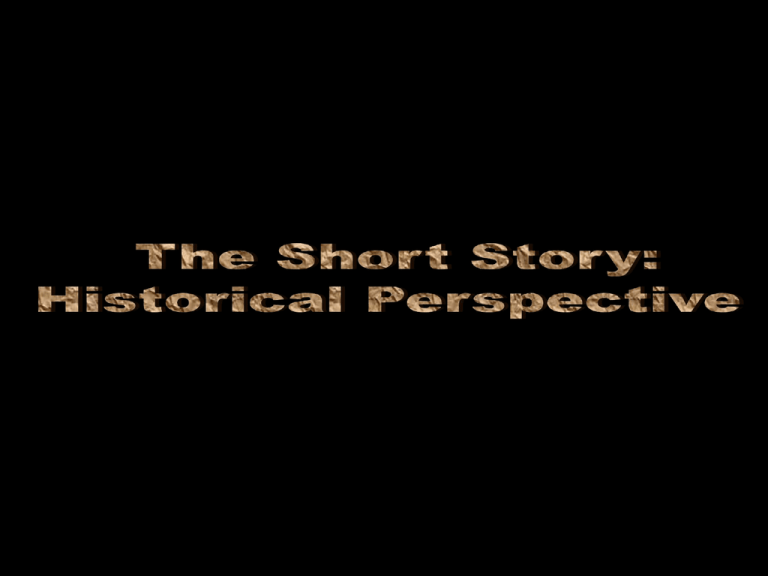
The Influence of the Past The short story is actually rooted in the oral tradition of the distant past before the existence of written language. The earliest narratives evolved out of the need to share the experience of life with one another. In addition to the purely entertaining aspects of storytelling, oral cultures used it for a number of purposes: 1. To explain how things came to be (myths and legends) 2. To record episodes of history as well as preserve useful information (epics, ballads, and sagas) 3. Didacticism: (fables and parables) Once writing had been invented, the written word allowed writers to explore specific and individual complexities of life. Short Story: Historical Perspective Time Frame: (circa) 3500 BC Egyptians: songs to regale Pharaohs, in narrative form Old testament stories, e.g. Creation story in Genesis, stories of Moses, Ruth, and Jonah and the whale Greeks and Romans: episodes and anecdotes in classical narratives, Aesop's fables Life of Christ: Christ uses parables to teach his disciples Middle ages: fables and epics about beasts 13th century: Gesta Romanurum, collection of tales 14th century: Decameron and Canterbury Tales 15th century: Le Morte Darthur, collection of tales about Knighthood (circa 1450: Invention of movable type (Guttenberg); printing of bible) Guttenberg Bible: Library of Congress Embellished Page from the Guttenberg Bible Kennedy and Gioia: Discussion of Related Varieties of Fiction Traditional forms of story telling Fable: A brief story that sets forth some pointed statement of truth (moral/didactic) Textbook selections: “The Appointment In Samarra,” “The North Wind and the Sun,” “The Camel and His friends” Common Characteristics: Content: often incidents that relate to the unusual, sometimes supernatural; many of which have their origin in folklore sources. Characters: often anthropomorphized animals, (beast fable) but people and/or supernatural figures may appear Structure: ‘skin and bones,” sketched, lacks decoration--depth of character and setting; everything leads to the usually explicit moral, hence pedagogic in its purpose Traditional forms of story telling, cont. Parable: A brief story that also sets forth some pointed statement of truth, but it is more realistic and often allegorical Textbook selection: “Independence”; Also mentioned: one of the most famous of Christ’s parables, “The Prodigal Son.” (chp 6), pp. 164-65 Common Characteristics: Content: often incidents that relate to the mysterious or suggestive in tone Characters: often humans, rather than anthropomorphized animals, or natural forces. Structure: Although also didactic in its purpose, the parable’s moral is often implicit, and the meaning may have various interpretations; The arrangement of events is often more plausible. A parable by Tuli Kupferberg: Once there was an atomic bomb who longed desperately to be a bullet. “Why,” said his fellow atomic bombs, “when you can be the most powerfully destructive weapon in the world would you want to be a bullet?” The atomic bomb sighed and said, “I miss the personal touch.” Please write what you think is the meaning of this parable? Traditional forms of story telling, cont. Tale: A brief story that sets forth strange and wonderful events without detail of character. Sometimes short story and tale were used interchangebly. Textbook selection: “Godfather Death,” Brothers Grimm Types: Tall Tale, Fairy Tale Common Characteristics: Content: often incidents that relate to the fantastic or supernatural Characters: often humans, but they are not delineated Structure: May be complicated or not, but lacks the conscious structure of a short story; it is usually used to denote any short narrative, true or fictitious. More recent “relatives” of the short story 16th century: the picaresque novel 18th century: the novel (roman is the European term) Roman/ce Both are continuing tributes to the human love of narrative and important factors in the development of a “formal” kind of storytelling 19th century, the short story flowered; there was a conscious formulation of this type of narrative as an art form. Notable among the founders of the modern short story: In America: Washington Irving, Nathaniel Hawthorne, Edgar Allen Poe Herman Melville In France: Guy de Maupassant and Prosper Mérimée In Germany: E. T. A. Hoffman In Russia: Anton Chekhov Edgar Allan Poe 1809- 1849 The Short Story Definition: It is a relatively brief narrative in prose Length: It may may range in length from 500 words up to 12,000 to 20,000 words (“long-short story”) Extensive diminution: Flash Fiction, Nano Fiction, Twitterfic Characteristics: definite formal development; a firmness in construction; unity is found in overall effect, plot, theme, character, mood, point of view, tone and style. Purpose: It tends to reveal character through a series of actions or under stress, the effect being accomplished when the reader comes to know what the true nature of the character is (whereas the novel shows character developing under the impact of events). James Joyce’s description: epiphany-- because of its quality of “revelation” Commercial Fiction Written for entertainment Takes us away from reality Objective is pleasure Literary Fiction Written to broaden, deepen, and sharpen our awareness of life Takes us deeper into reality Objective is understanding World of Fiction fictio =“shaping, counterfeiting” Presents an insight--large or small-- into the nature of our existence Characters: Sympathetic hero or heroine often stock figures Structure: A plot which emphasizes action and suspense “Fixed expectations” of readers of Commercial Fiction Ending: A happy one that doesn't move the reader beyond one plane of reality Theme: (if there is one) usually a message that is rooted in predictability Literary fiction Any fiction that illuminates some aspect of human life or behavior with genuine originality and power may be called literary. Such a story presents an insight--whether large or small--into the nature and condition of our existence. It gives us a keener awareness of our humanity within a universe that is sometimes friendly, sometimes hostile. It helps us to understand our world, our neighbors, ourselves. As you begin your excursion into literary fiction, please include in your mental backpack The semblance of reality in dramatic or nondramatic fiction. The concept implies that either the action represented must be acceptable or convincing according to the audience’s own experience or knowledge or, as in the presentation of science fiction or tales of the supernatural, the audience must be enticed into willingly suspending disbelief and accepting improbable actions as true within the framework of the narrative. Encyclopedia Britannica Cell Phone, c. 1970 Cell Phone, c. 2011 IBM Selectric typeball, 1961 Malling Hansen Writing Ball, 1870 Replica of Gutenberg’s Printer, c. 1455 The print brush: one of the world’s smallest printers Model of the first transistor World’s smallest transistor Ancient design for a garden ENIAC 1946 One of the first computers The space cube: one of the world’s smallest computers Book Repository Modern Book Repository Modern Book Repository So, what has not gone through a miniaturization evolution? 1950’s TV Panasonic 152 inch 3D Plasma

